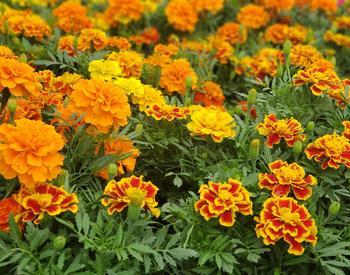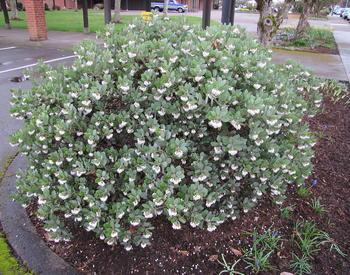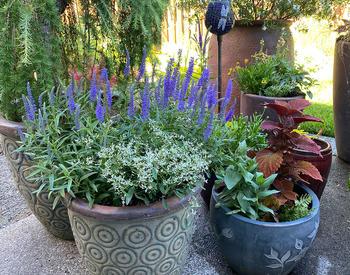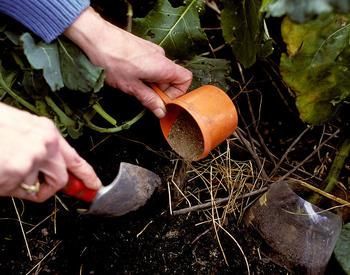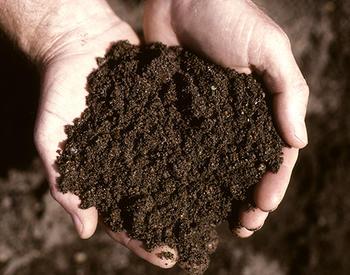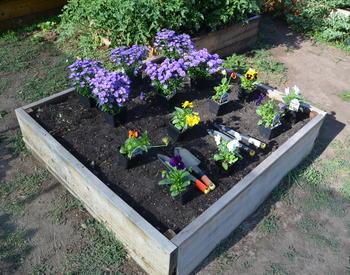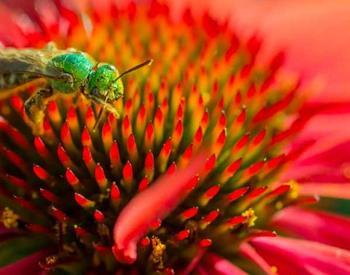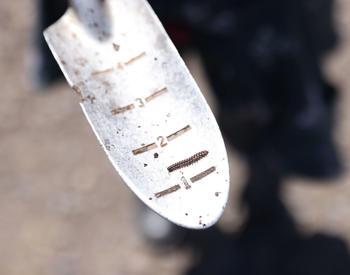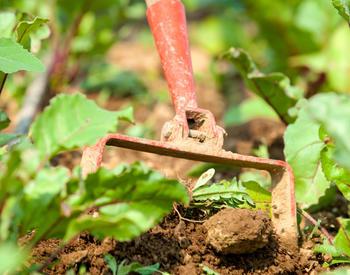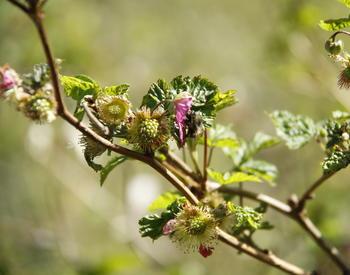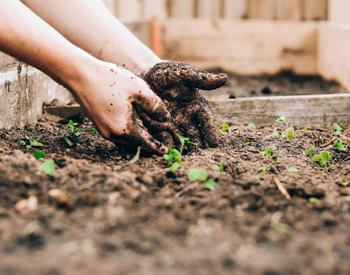Cucumbers gratify the senses. Their crisp texture, color, and great taste star in a wide variety of foods. Sauced with sour cream or yogurt and flavored with spices and herbs, they can enliven a buffet spread.
Cold or hot cucumber soup can be an epicure's delight. The piquancy of cucumber relish tones up tired hamburgers.
Cucumber is a tender, warm-season vegetable that produces well in gardens when given proper care. It belongs to the Cucurbitaceae family, along with squash, pumpkins, muskmelons, and gourds.
Contrary to popular opinion, cucumbers will not cross-pollinate with other members of the vine crop family. Cross-pollination is not the cause of bitter, tasteless, or off-flavor cucumbers.
Bitter cucumber sometimes are produced during a cool growing season. The bitterness tends to be more concentrated in the stem end, and it's usually most evident just under the skin.
Generally, the bitter taste is masked when cucumbers are made into pickles. In order to eat them fresh, peel them more deeply than you normally would, especially at the stem end.
Cucumbers range in size from tiny gherkins, less that 1 inch long, to large cylindrical or serpent-like fruits, 20 or more inches long.
Quality cucumbers normally are green, but there also are white- and yellow-fruited types. Most over-mature cucumbers turn yellow or orange or white.
The two main categories of cucumbers are long varieties for pickling. The distinguishing feature of many of the varieties is their resistance to or tolerance of various diseases.
Other available types include lemon cucumbers, which have the shape and color of large lemons, and several foreign imports, such as the horned cucumber.
Japanese cucumbers, such as Sooyoo (also spelled Suyu and Sooyow) and Early Ochiai, grow up to 20 to 24 inches long. Armenian cucumber also is a long, slim fruit of a paler yellow-green than other types. Yates Moneymaker comes from New Zealand, and Cornichon de Bourbonne from France.
"Burpless" or European cucumbers are seedless, slicing varieties. It is claimed that they are more easily digested than regular types. The fruits are very long and thin.
Most cucumber varieties require much space to grow. A small-space gardener has the options of growing cucumber vines vertically against a trellis or fence (where they won't shade other plants) or growing one of the new bush varieties. You also can grow these dwarf hybrids in large hanging baskets or other containers.
Cucumbers require 50-70 days of warm weather to reach harvest. Early-maturing varieties need about 50 days, medium varieties need 60 days, and later-maturers need 70 days.
All standard, open pollinated varieties and some hybrid varieties are monoecious - they produce two kinds of flowers, male and female.
The first yellow flowers that appear on the plant are male (staminate). These provide pollen that bees and other insects transfer to the female (pistillate) flower to cause pollination.
Male flowers have no potential to bear fruit; they wither and drop from the plant after blooming. This is a normal occurrence early in the growing season.
Subsequent flowers are both male and female. The female flower occurs at the end of an immature ovary, which on close examination turns out to be a very tiny cucumber.
Cold temperatures and rainy weather that hamper bee activity, improper use of insecticides that kill bees, or other factors that interfere with pollination of the female flower will reduce fruit set and yield.
Some of the more recently developed hybrids are gynoecious - they produce female flowers only. They advantage is that the yield is greater - a cucumber is produced at each flower, starting with the first six or seven flowers.
The all-female plant can set about one-third of its yield without being pollinated but needs male blossoms to pollinate the rest. Seed packets will contain a few monoecious seeds to produce plants with male flowers. These seeds usually are dyed a different color.
Varieties
- Pickling: Blitz, Fancypack, Pioneer, Calypso,
- Slicing: Marketmore 80, Dasher II, Slicemaster, Spring 440.
- Novelty: Snake, African horned.
Seedbed
Cucumbers are adapted to most soils but grow best in a fertile soil with large amounts of compost. Start seedbed preparation when the soil has sufficient moisture to form a ball that will crumble into medium-sized fragments.
Plowing or rototilling should incorporate crop residues and organic matter into the top 7 to 8 inches of soil. It should destroy current weed growth and provide a small granular-type bed for transplanting.
Overworked soil becomes powdery and has a tendency to crust. The ideal pH for cucumber growth is from 5.8 to 7.0, but they do well in soil with ranges from 7.0 to 8.0.
Planting
It's usual to start cucumbers by planting seeds directly into the garden after danger from frost has passed. For an earlier crop, however, you can start them inside in seed pots about 3 weeks before transplanting them to the garden.
If transplants are purchased, they should be vigorous. Space transplants 12 to 24 inches apart in rows 48 to 72 inches apart.
The variety you plant should have an early maturity date (55 to 65 days after transplanting) and should be adapted to weather conditions in your area.
Since cucumbers are killed by even light frosts, protect them with 'hot caps" made of paper, plastic jugs, or cardboard. Cucumbers love warm soil, and the use of plastic mulches and row covers or tunnels is common.
When direct seeding, use the following specifications:
- Seed per foot - 6 to 8
- Row width - 60 to 72 inches
- Seed depth - 1 inch
Fertilizer
One pound of a preplant fertilizer (20-20-20-, for example) for each 100 square feet is recommended. One week after blossoming begins, sidedress with 1.5 oz of ammonium sulfate for each 10 ft of row.
You can base the amount of fertilizer you apply on a soil test report from a testing laboratory, if you wish.
Watering
Cucumber is a shallow-rooted crop and requires frequent watering. Soil moisture should not drop below 65% of its total water-holding capacity (WHC). In clay-loam soils this can be judged by the hand method.
A handful of soil at 65% WHC can be formed into a firm ball. The ball will feel moist, but the soil will not stick to your hand, and the ball will be pliable. When broken, the ball will crumble into medium-sized fragments.
Cultivation
Cultivation should be shallow when necessary to remove other plant competition. Deep cultivation close to the plants will destroy much of the root system and reduce yield and quality. If it becomes necessary to cultivate, penetrate the soil no deeper than 1 inch. The use of black plastic ground mulch is highly recommended for keeping out weeds and warming the soil.
Diseases and Insects
Damping-off caused by Pythium optimum, curly top, powdery mildew, and cucumber mosaic can be a problem. See FS 242, Discourage Plant Diseases in Your Home Garden.
The following insects may be a problem: aphids, cucumber beetle, cabbage looper, thrips, slugs, spider mites, garden symphylan, and wireworms.
Harvesting
You can harvest cucumbers any time after they have reached the desired size but before they turn yellow and the seeds become hard. You can use small, young slicing cucumbers for pickling or fresh use, but special pickling varieties will yield the best pickle product.
For slicing, the fruits should be 6 to 10 inches; for pickling, 2.5 to 6 inches. They are of the highest quality when they are dark green, firm, and crisp.
Don't allow cucumbers to turn yellow. Remove old fruit from the vine so that young fruits will develop. The fruits grow rapidly to harvest size. Pick your vines every other day.
Preservation
Pickling is a process of preserving food with salt and / or vinegar, with or without spices or sugar. There are many varieties of pickles and relishes.
Relishes usually are made from a combination of vegetables, chopped fine. Usually, relishes include at least some cucumber.
Cucumbers that are not more than 2 inches in diameter make the best pickles.
Cucumbers should be used as soon as possible after picking. If they can't be used within 1 to 2 hours after harvesting, refrigerate them, without washing, or spread them in a cool, well-ventilated place.
Picking very early in the day often is recommended, to help prevent a bitter flavor. Commercially waxed slicing cucumbers should not be used for pickling.

